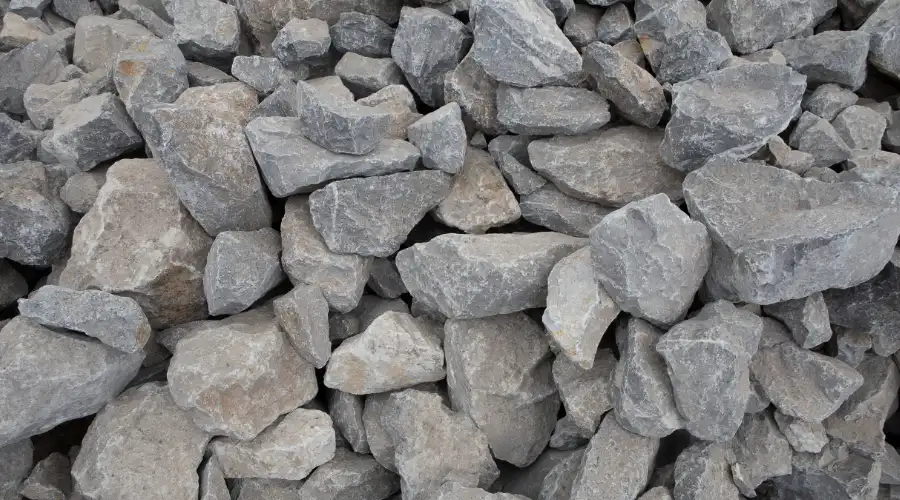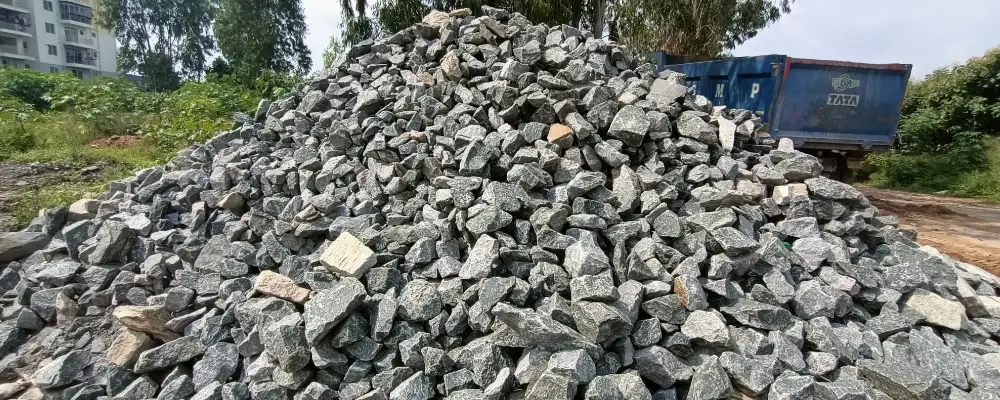In the construction of any building, a good foundation is extremely crucial. One of the techniques applied to prepare the grounds for foundations is known as rubble soling. You can create a strong base for your building by using rubble soling. It is the crucial concept followed by civil engineers in India. In this blog, you will come to understand what rubble soling is, why it is required, what its advantages and disadvantages are, and how it is done step by step.
What is Rubble Soling?
Rubble soling is one of the ground improvement techniques used in construction to maximize the stability and bearing capacity of soil. In this process, coarse aggregates are laid and compacted over the prepared subgrade.
The layer acts as a strong base that supports the foundation of a building. The stones are placed close together to form a strong and firm surface. The stones are usually unshaped or irregular in shape but interlock effectively due to their angularity, forming a dense and stable layer.
The soling layer typically consists of stones of sizes ranging from 75 mm to 150 mm, hand-packed closely with minimal voids. The general purpose of rubble soling is to improve the bearing capacity and to stop the soil beneath from moving or settling too much. It also distributes the load from the building evenly, so it will not crack and damage the structure.
Importance of Rubble Soling in Construction
Rubble soling is also responsible for keeping your building safe and strong. The following are the reasons why it is essential:
- Efficient Ground Improvement: For low-bearing-capacity soils, it improves performance without any expensive soil stabilization.
- Resists Soil Movement: Loose or soft soil will change position when weight-loaded. Rubble soling prevents this by establishing a solid layer on the ground.
- Aids Drainage: The gaps between stones allow water to pass through easily. It reduces the risk of water accumulation and damage.
- Supports Heavy Loads: Rubble soling distributes the structural load uniformly over the subgrade and reduces stress concentrations and prevents differential settlement.
- Protects Foundations: By keeping water away and supporting the soil, it prevents cracks and other foundation problems.
- Economical: It uses local rubber or stones. Therefore, it is less expensive than some other foundation-based preparation processes.
Applications of Rubble Soling in Construction
Rubble soling is used in various parts of construction work. Here are some applications:
- Under Foundations: It is placed below the foundation for a solid base.
- Under Floors: It is used for underground floors to provide a firm surface.
- Road Construction: It is used in roadbeds to stabilise the ground.
- Temporary Roads or Paths: It is used to create rough and stable paths on construction sites.
- Drainage Layers: It helps improve water flow in some works.
Due to its strength and drainage, rubble soling is often preferred for buildings on loose or wet soil.
Materials Used for Rubble Soling

The materials typically used for rubble soling include:
- Rubbles: For rubble soling, granite, basalt, or any other strong rocks are chosen. The preferred size and shape are 75mm to 150mm.
- Crushed Stone: In case larger stones are unavailable, gravel fill or crushed stones are used to reduce voids and provide dense packing between the rubble.
- Sand or Quarry Dust: To fill the space among the rocks, sand or quarry dust are used.
- Binding Material: Like moram sand or moorum for better interlocking.
- Water: For compaction during laying.
Pros and Cons
When there are advantages, there would be some disadvantages too. Similarly, rubble soling has both pros and cons, which you should be aware of to make a wise decision.
Pros:
- Long-lasting: It provides a strong foundation that will last for several decades.
- Sufficient Drainage: The gaps between stones allow water to drain through. It helps avoid water damage.
- Budget-Friendly: For rubble soling, you can make use of stones that are available locally and cheaper.
- Ease of Use: No specialised equipment or skilled labour is needed.
- Stop Settlement: It minimises soil movement below the foundation.
Cons:
- Not Suitable for Very Soft Soils: Rubble soling can be sufficient in very weak soil.
- Labour-Intensive: Pressing down the stones and placing them right takes time and hard work to do it properly.
- Irregular Surface: Stones are not regular in shape. Therefore, extra steps must be taken to create an even surface.
- May Require Additional Layers: Sometimes, you must put another layer of concrete on the surface for support.
- Needs Proper Drainage Design: In case of inadequate drainage. Water may still be a problem underneath the rubble layer.
Step-by-Step Process of Rubble Soling
Rubble soling is the process of laying stones in a layer to create a strong foundation for walls and floors. Below is the step-by-step procedure:
- Step 1: Ground Preparation – Level the ground upon which rubble soling will be carried out before starting. Clear the ground of grass, roots, loose soil, or waste.
- Step 2: Layout Marking – Mark the area of soling with chalk lines, ropes, or wooden stakes according to the foundation plan.
- Step 3: Position the Rubble Stones – Place big stones (150 mm size) side by side without any gap. Start from one end and continue row by row. Ensure that the flat surface is facing upwards.
- Step 4: Hammering and Setting the Stones – Use a hand hammer to adjust and fix the stones firmly in place. Ensure they are tightly packed with minimal voids.
- Step 5: Fill the Gaps with Smaller Stones or Chips – To strengthen the layer, fill small stones or stone chips into the gaps between large pieces of rubble. This gives stability.
- Step 6: Watering the Surface – Water over the surface of the stones laid. This compacts the small pieces and makes them stronger.
- Step 7: Compact the Layer Properly – Use a hand hammer or plate compactor to press the stones tightly into place. This step is important for strengthening and levelling.
- Step 8: Final Surface Check – After compaction, check if the surface is even. Add more stone chips or gravel to fill gaps, then compact again if needed.
Key Takeaways and Conclusion
And here you go! Rubble soling may seem like a simple step, but it plays a prominent role in building a strong foundation. The right soling minimizes soil movement and spreads the weight of structural loads evenly. In addition, it reduces the risk of water getting stored under the foundation.
The ease of use and affordable cost make it a common choice for residential and basic commercial constructions. Anyhow, you should opt for high-quality stone, do proper layering, and put careful compaction to make it more effective for a long time.
Now that you understand what rubble soling is, why you must do it, and how to do it, you can plan better for your next construction project. A good construction begins with a solid base, and rubble soling may be the perfect base you require.

